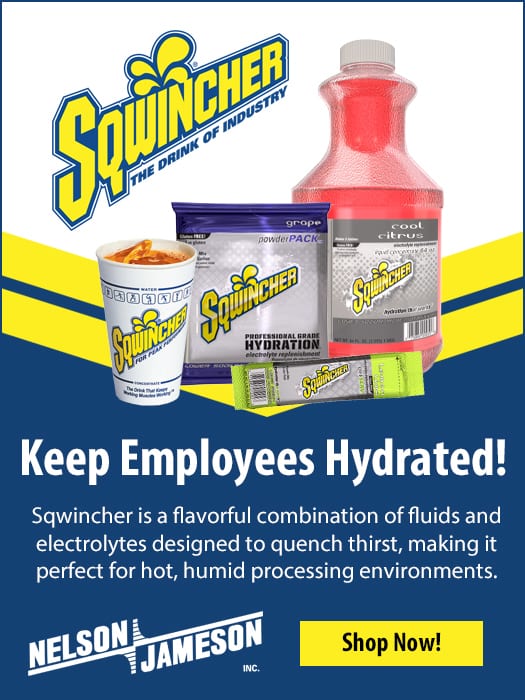safety
TALK

By Randy DeVaul
A comprehensive review
How to fully integrate safety with a three-phase approach
erformance Safety can be defined as an on-going review of processes, procedures, and practices through observation, workplace examinations, and task analysis. It is a simple, yet total and comprehensive review of all performance areas (machine, worker, and environment) to ensure pro-active, continuous improvement at all production levels.
P
The phrase “behavior-based safety” has always conjured up a fault-driven process, even though it was not intended to be so. Behavior alone cannot create or cause injuries. It is true that unsafe actions contribute to more than 85% of all injuries. But choices made by a worker are not always a reflection of his behavior. It includes the “behavior” of the manager and the safety culture.
For optimum performance, safety includes a three-phase process: practices (employee choices in how to perform assigned tasks); procedures (the overall established method to perform the task); processes (the overall end result in operations and production with equipment, end product, quality control, etc.).
Two examples of Performance Safety in progress
We identified an unsafe “condition” in the installation of new equipment at our site prior to start-up. We got together engineering, the plant manager, a production foreman, a production crew member, the safety professional (that was me), and the construction foreman responsible for the installation at the site (a cross-functional process team). We began brainstorming: How would the task have to be performed (procedures)? How would the task actually or most likely be performed by the employee (practices)? How would the outcome of this task affect the product and tasks “downline” (process)?
The procedures would identify the hazard and means of eliminating the hazard. The employee would need to follow the procedures to ensure safe performance. The procedures would have to be written clearly to encourage the employee to make the right choices and protect him from taking a “short-cut” (practices).

Photo: RapidEye / E+ via Getty Images.
We first thought of a $15,000 engineering fix to remove the hazard. Then we asked what would happen if that engineering solution broke – it wouldn’t hold up within the work environment. After a few more ideas, a light bulb came on. The equipment operator suggested that the hazard could be corrected with a $200 part easily handled by one person which allowed the employee to follow procedures without risk or taking a shortcut. The procedure was developed with the newly-installed part and the employee could follow the procedures logically and safely, ensuring he followed safe practices to perform the task. Had we not looked at the problem with all of the connected people in the process, we would have spent $15,000 that would not fix the problem.
In the second example, an employee had to enter a tunnel with a sledgehammer to unclog material getting stuck at a transfer point on a conveyor line. I was asked what could be done to minimize the employee’s exposure to the myriad of hazards that developed from having to clear the jam. The material was getting stuck because it was too large for the engineered design of the transfer point. The material was too large because the crusher upline had recently been “opened up” to allow for greater tonnage output. As a result, the down-line transfer was getting jammed.
Keep the big picture in view
Rather than address the specific hazards now caused by the change, we were able to treat the root cause of the problem. Once the crusher settings were re-adjusted back to the engineered design, the hazards and exposures were gone. When the material upline was at the “right” size, it passed through the downline transfer point. There was no longer employee exposure to noise, dust, tunnel hazards, shoulder pain, or continued beating on the transfer box because the sledge was no longer needed. It created the optimal performance of the entire system, thus correcting the need to fix a practice in an exposed environment.
Everyone understood that a change in the process created a set of other problems that, on the surface, could not be seen. The transfer point was too far downline in the process to connect the dots with the change in the upline process. The old saying, “You can’t see the forest for the trees” certainly fit in this case.
Performance Safety helps keep the big picture in view while addressing specific issues. In the above example, it was not my job to tell an experienced manager how to do his job. But in understanding the process, we could identify a situation that ultimately also helped the manager’s production numbers.
Anyone with knowledge of conducting incident investigations knows to ask questions that get to the “root cause” of the incident. In the same way, getting to the hazard’s root cause to identify process, procedure, or unsafe practice concerns will allow you to correct the problem rather than correcting a symptom that never seems to go away.
Randy DeVaul (safetypro1158@gmail.com) is an author, writer, and experienced safety professional in OSHA- and MSHA-regulated industries and in workers' compensation best practices. Randy conducts webinars regularly on safety/health and workers’ compensation topics. He is the founder of MOST (Mine/Occupational Safety Training), creator of the 'Safe at Home' series, and Rapid Response CPR (www.rapidresponsecpr.com), providing BLS/emergency response courses for healthcare professionals, first responders, and response teams. Randy resides in Central Florida. Comments are always welcome.

